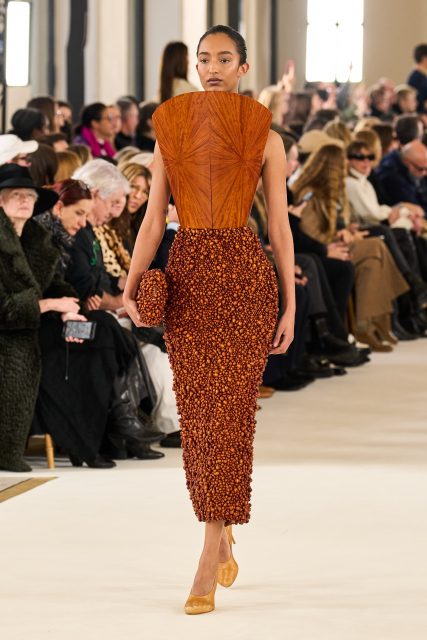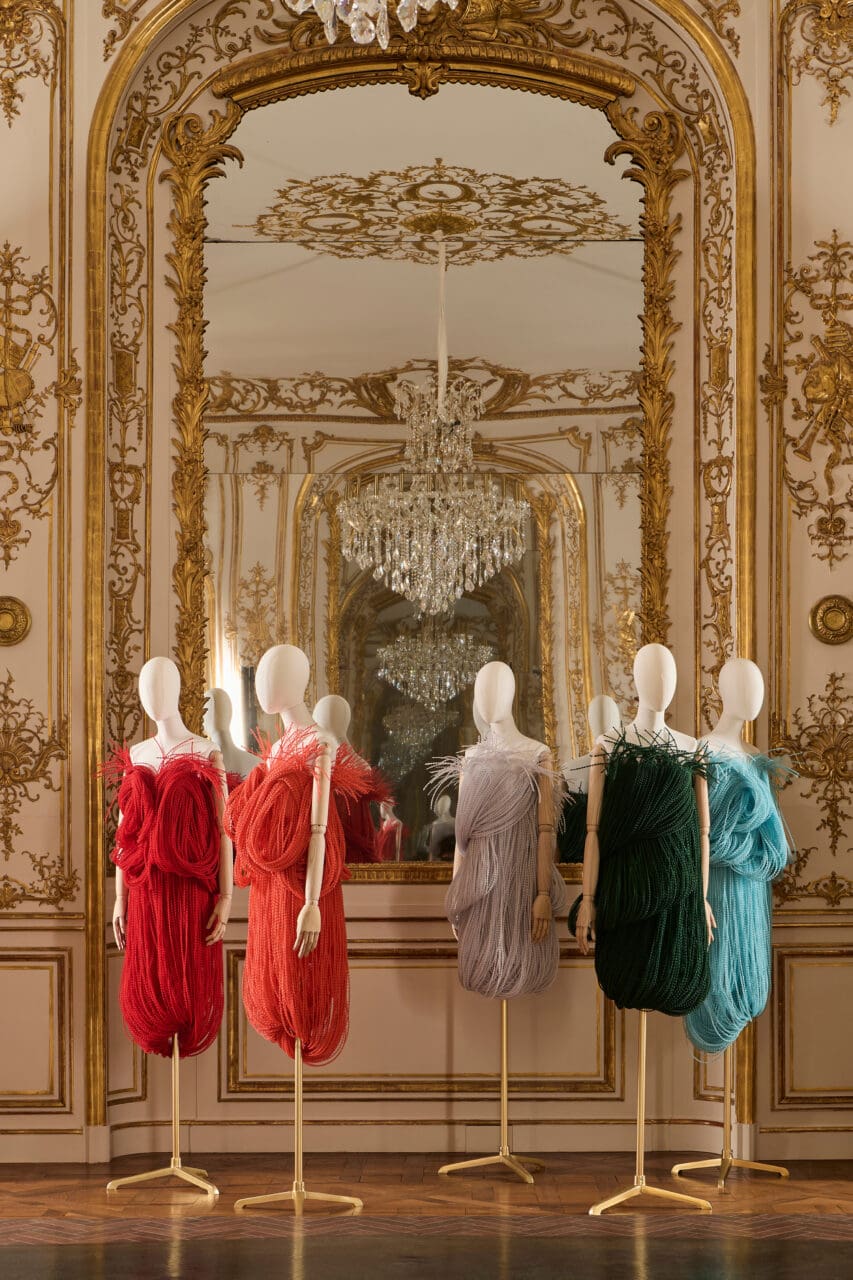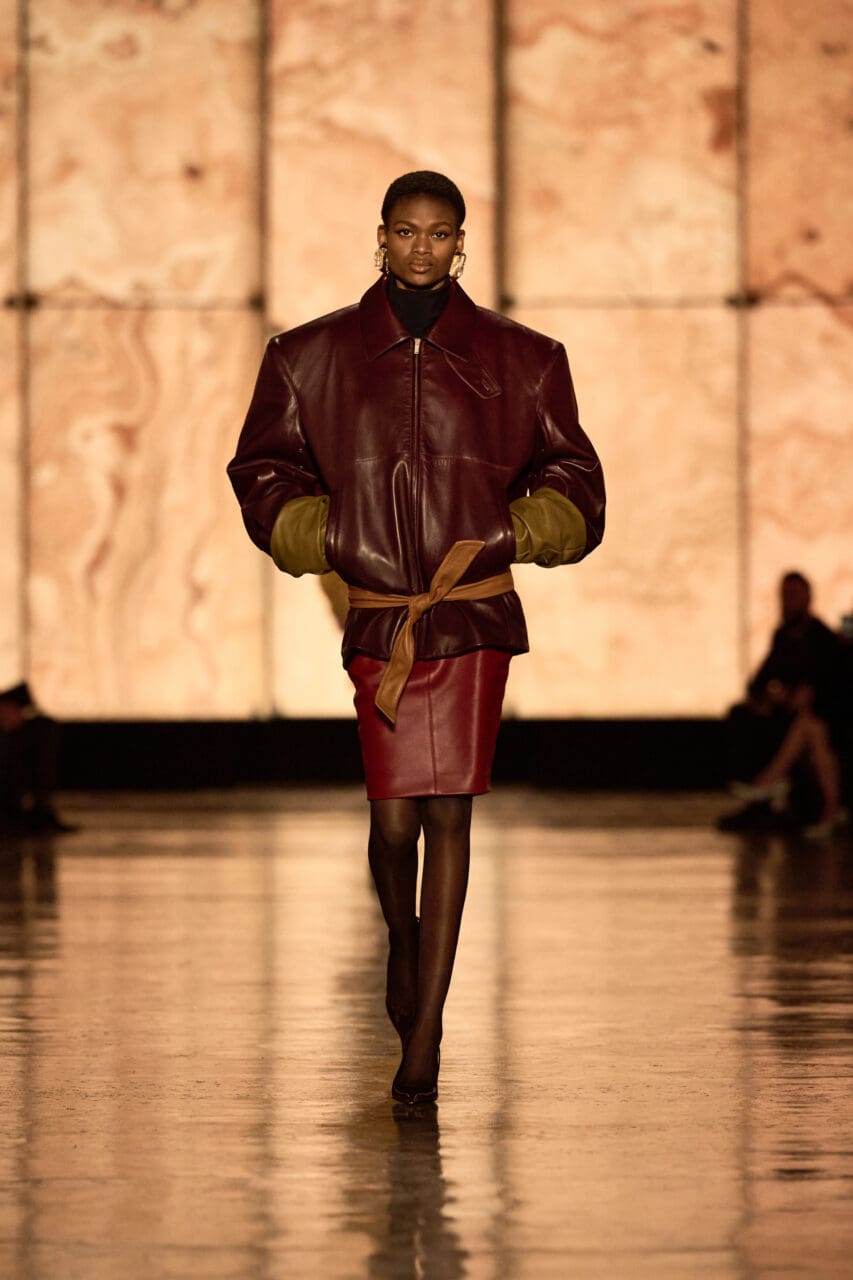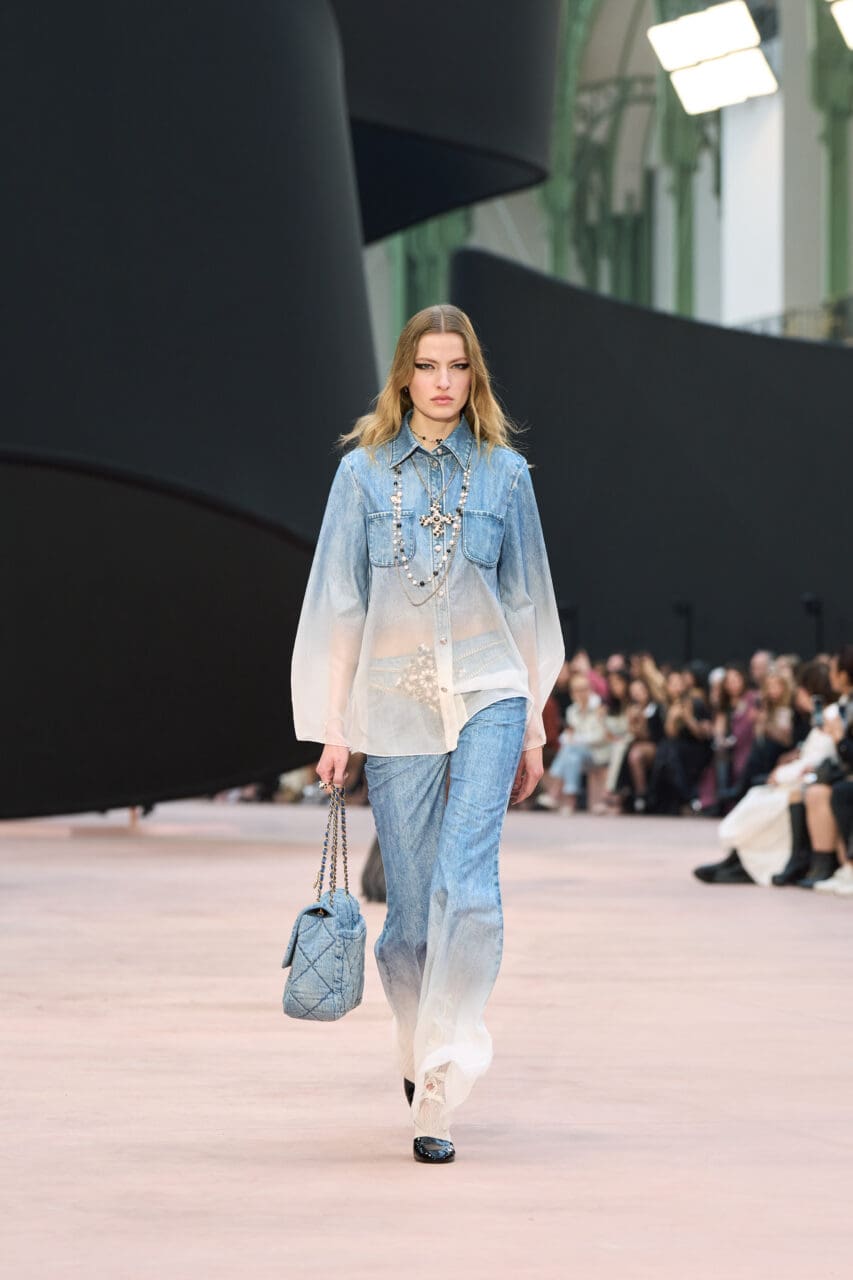What could a conceptual camel be doing at Chanel couture? This puzzle—the first sight to greet the audience as they walked in—can easily be solved by googling Coco Chanel’s apartment. What swiftly comes up are photos of Chanel at home in the Rue Cambon, with a model of a camel on a side-table, large bronzes of deer clustered around her fireplace, and lion effigies here, there, and everywhere. Virginie Viard held a tete-a-tete with the artist Xavier Veilhan to come up with a set idea for the spring couture show in said apartment and—you can picture it—they must’ve looked around and said to each other “let’s do the animals!”
Hey presto! A playful idea that got Viard into the swing of a theme—a parade of something between cute Chanel drum majorettes, or perhaps, circus ringmasters. They flipped along in their short, flared suits with the odd top hat and bow tie, shod in little white cross-laced boots with Chanel’s signature black-tipped toes. By this time, they were walking around Veilhan’s menagerie of mobile animal sculptures—a horse, lion, deer, buffalo, bird, fish, dog, and elephant—which had been trundled out to join the camel.
Still, it’s not in Viard’s nature as a creative director to push a concept over clothes. Instead, here was a collection of haute couture that felt youthfully relatable. The spectacle of her march of the majorettes simply became a device for freshening up the template of Chanel day suits, led out by a charming military-jacketed number in white.
That was followed by varieties of abbreviated, gilded Chanel tweeds: a short trapeze coat, de-frumpified box-pleated skirts cut as minis, and then a tiny sugar-pink coat-dress with a stand-away collar. It was a bit ’60s Mod maybe, but not too obviously.
Proceeding “not too obviously” might actually be Viard’s motto. So it was, when the collection switched from short and sweet daywear to long and slim evening. Within this sequence, there was a chic, neat, parma-violet short sleeved tweed coat, worn with white leather opera gloves, and long, body-skimming dresses in tiny polka dots, and black or white lace.
Asked afterward if she’d been thinking 1930s with these languid dresses, Viard looked as if vintage Chanel collections hadn’t crossed her mind. “No,” she shrugged. “That silhouette might make you think it, but no.”
Back to her reticence about committing to themes, again. Of course, there’s no rule that designers should have to stick to high concepts. Sometimes, truth be told, they can really get in the way of designers just designing clothes for modern life. Instead, Viard is a “modern wardrobe for real women” kind of a designer. Her collections aren’t fantasy, even if she well knows how to conjure up the magic of the couture ateliers to make pieces that look like snowy, frothy whipped cream.
And then, at the finale, out popped the bride from a hidden door in the elephant. She was wearing a little white dress entirely covered with embroidered doves and a white bow tie. It was a light-touch moment, simple and rather charming. Much like the spirit of the rest of the show.
Editor
Sarah Mower





